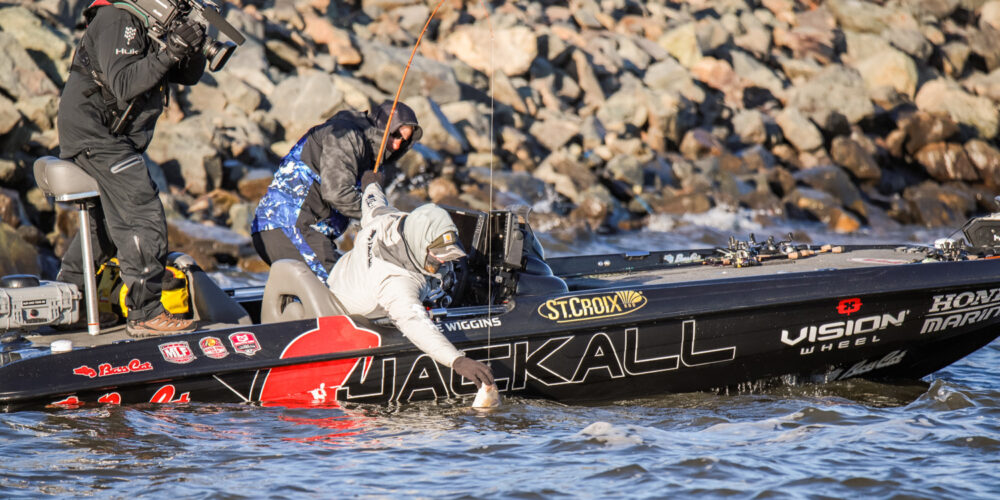Wiggins’ Case for Glass Rods: The Defense Rests

The use of fiberglass in fishing rods dates back many decades. Fiberglass has many fans in bass fishing, especially when it comes to throwing a crankbait.
MLF pro Jesse Wiggins is in that group, but uses fiberglass rods for more than just diving baits. In fact, he relies on fiberglass for just about every moving bait and sees many benefits, notably landing more fish.
Why Fiberglass?
Wiggins uses a St. Croix Legend Glass rod for just about every reaction bait in his arsenal.
“Just about anytime I’m winding something in, I use a glass rod,” Wiggins confirms. “I use them for spinnerbaits, diving crankbaits, lipless crankbaits, and ChatterBaits. The only exception is swim jigs or swimming worms, where I need to drive the hook more.”
His use of fiberglass rods has to do with putting the odds in his favor to land more fish.
“For baits with open hooks or trebles, glass gives the fish a little bit of leverage, and you want that,” he believes. “It gives you a little more time for them to get the hook and you don’t rip the hooks out of their mouth. Glass is the deal with any bait with treble hooks.”
New and Improved Glass Rods
Fiberglass has carried a reputation of being heavy with a lack of sensitivity, but that’s changed over the years. Wiggins has always been a proponent of fiberglass, but says that his St. Croix Legend Glass rods are different than his old glass rods.
“Most of the glass rods I used in the past were good but really heavy,” he says. “The Legend Glass series is still a 100 percent glass rod, but it’s super light and sensitive.”
Wiggins mentioned sensitivity, which isn’t always the most critical thing when quickly retrieving a reaction bait, but he says it makes a difference.
“I remember fishing Lake Martin a few years ago right when I got the new rods,” Wiggins recalls. “The bottom was muck and there was a bunch of algae and old leaves. I could feel each time my bait hit one of those leaves and could clear it off of my bait by ripping my rod and not end up wasting a cast reeling in a bait that was fouled up. I know what my bait is doing the whole time.”
Wiggins’ Top Picks
The St. Croix Legend Glass series is available in both spinning and casting models and for casting rods, seven models range from 6-foot-10 to 8-foot-8. They’re built with a lightweight S-Glass bank, quality components, and St. Croix’s IPC (Integrated Poly Curve) tooling technology.
Wiggins has used all of the rods and has a few favorites that get most of his workload.
“The 6-foot-10 medium-heavy is a great squarebill rod when you are fishing up near the bank,” he says. “The shorter length makes a huge difference when you’re casting around limbs, bushes, and rocks. A shorter rod helps me be much more accurate when trying to cast to targets.”
For more open water, he prefers the 7-foot-2 medium when covering flats with a squarebill. For diving crankbaits, the 7-foot-4 medium heavy is his go-to.
Another of his favorites in the lineup is the 7-foot-2 heavy and Wiggins says it’s the perfect choice for vibrating jigs and lipless crankbaits.